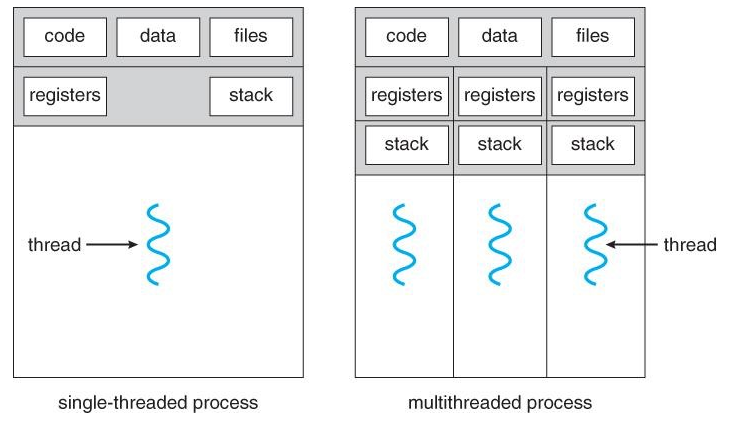Processes are very similar in nature to threads--they allow us to do pretty much everything a thread can do--but the one key advantage is that they are not bound to a singular CPU core. If we extend our office analogy further, this, essentially, means that if we had a four core CPU, then we can hire two dedicated sales team members and two workers, and all four of them would be able to execute work in parallel. Processes also happen to be capable of working on multiple things at one time much as our multithreaded single office worker.
These processes contain one main primary thread, but can spawn multiple sub-threads that each contain their own set of registers and a stack. They can become multithreaded should you wish. All processes provide every resource that the computer needs in order to execute a program.
In the following image, you'll see two side-by-side diagrams; both are examples of a process. You'll notice that the process on the left contains only one thread, otherwise known as the primary thread. The process on the right contains multiple threads, each with their own set of registers and stacks:

With processes, we can improve the speed of our programs in specific scenarios where our programs are CPU bound, and require more CPU horsepower. However, by spawning multiple processes, we face new challenges with regard to cross-process communication, and ensuring that we don't hamper performance by spending too much time on this inter-process communication (IPC).


































































